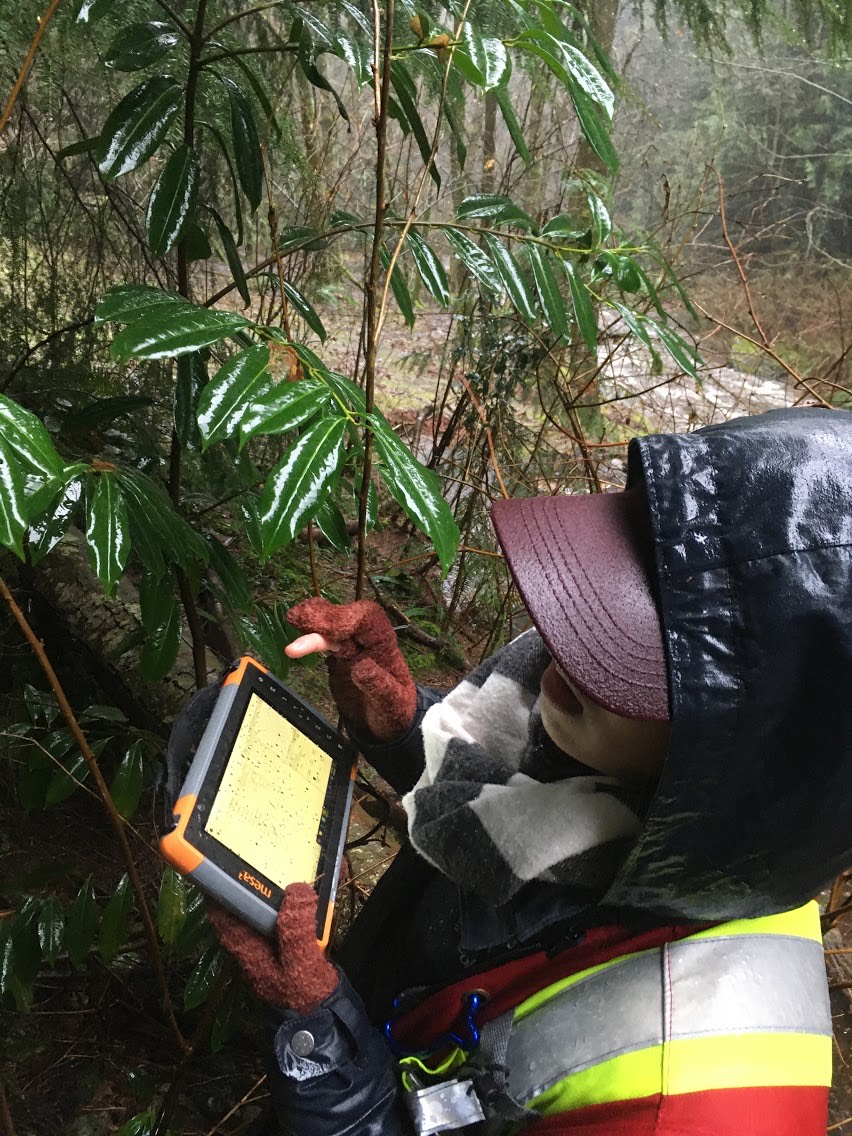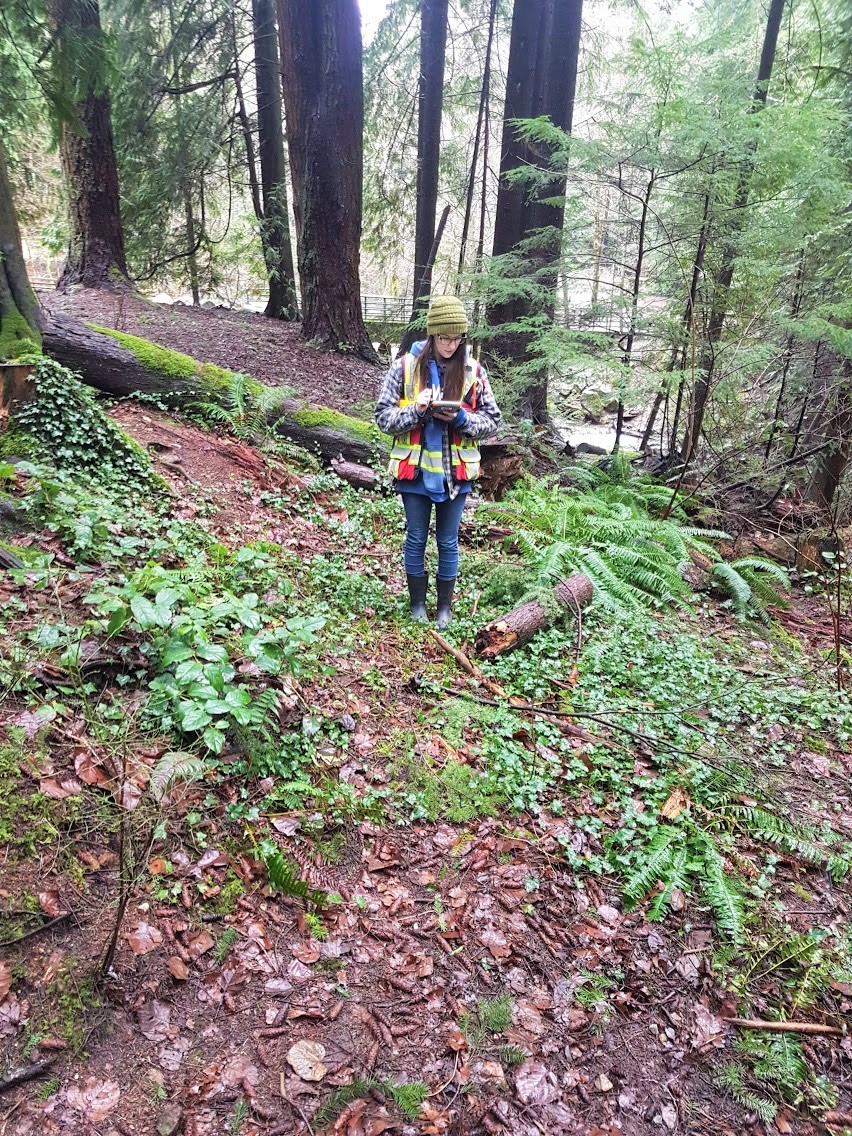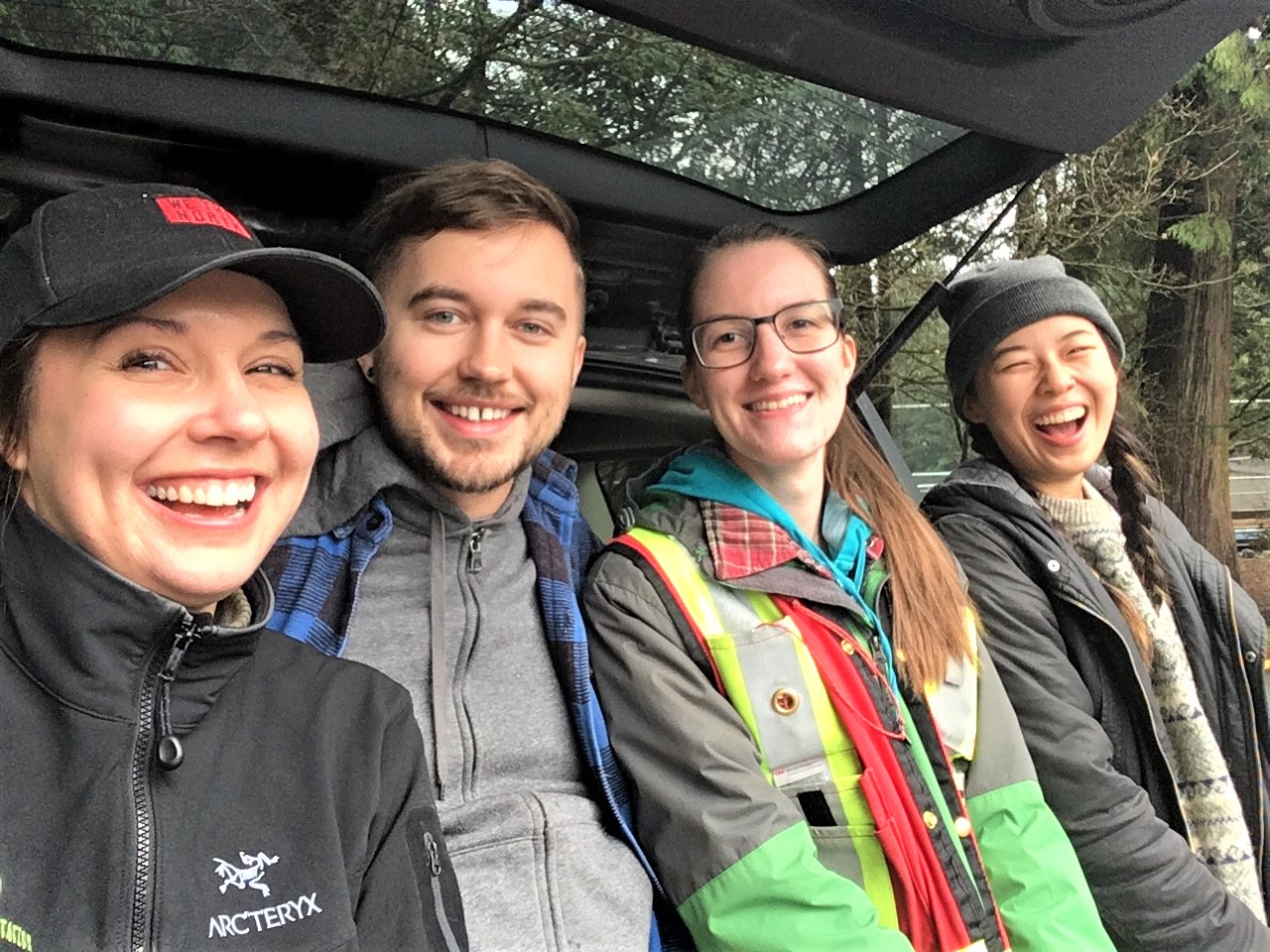Creating an award-winning report is no easy task, but recent graduates from the BCIT Forest and Natural Areas Management (FNAM) diploma program, Aaron Froc, Larissa Lau, Morgan Scott, and Aida Tribinevicius were up to the challenge. Students in the FNAM program complete an applied research project as part of their diploma, which includes the creation of a written report. These projects can range widely in topics, but require the implementation of multiple skills including: research, field work, team work, project management, presentations, and data analysis. This summer, the FNAM student team submitted their report in the 2020 Technology Report Contest held by the Technology Accreditation Canada (TAC) board and were awarded second place. 
“The Technology Report Contest is a wonderful legacy from CTAB (Canadian Technology Accreditation Board), and we are pleased to continue it,” remarks Richard Stamper, TAC Executive Director. “The contest is a great opportunity to showcase the incredible talent of students in national accredited programs.”
The reports were judged on their originality, complexity, academic rigor, innovation, conclusion/recommendations, and overall presentation/format by a panel of subject matter experts. This report contest is open to all students in the final year of a TAC or CTAB accredited program. In 2020, there were 33 reports submitted. The BCIT FNAM student report was highly regarded, and it was a close competition in overall quality, with the student team achieving the runner up position.
 The student team, which conducted their research over the course of the second year of their diploma, decided to focus on invasive plant species survey and mapping in District of North Vancouver parkland. The project was conducted with the guidance of Gwynifyre Taylor from the District of North Vancouver and under the supervision of BCIT faculty members Julia Alards-Tomalin and Hélène Marcoux. Throughout the course of their project, the student team developed and piloted a user-friendly invasive surveying protocol for the DNV to implement as part of a comprehensive management plan for all district-managed parkland. The versatile application of their methodology in priority park areas will produce useable data without exhausting resources, as it is important to acknowledge that land managers must consider financial resources and broader management priorities when implementing invasive management systems.
The student team, which conducted their research over the course of the second year of their diploma, decided to focus on invasive plant species survey and mapping in District of North Vancouver parkland. The project was conducted with the guidance of Gwynifyre Taylor from the District of North Vancouver and under the supervision of BCIT faculty members Julia Alards-Tomalin and Hélène Marcoux. Throughout the course of their project, the student team developed and piloted a user-friendly invasive surveying protocol for the DNV to implement as part of a comprehensive management plan for all district-managed parkland. The versatile application of their methodology in priority park areas will produce useable data without exhausting resources, as it is important to acknowledge that land managers must consider financial resources and broader management priorities when implementing invasive management systems.
Special thanks to Julia Alards-Tomalin for sharing this story, and congratulations Aaron Froc, Larissa Lau, Morgan Scott, and Aida Tribinevicius on all your hard work and your achievement!
